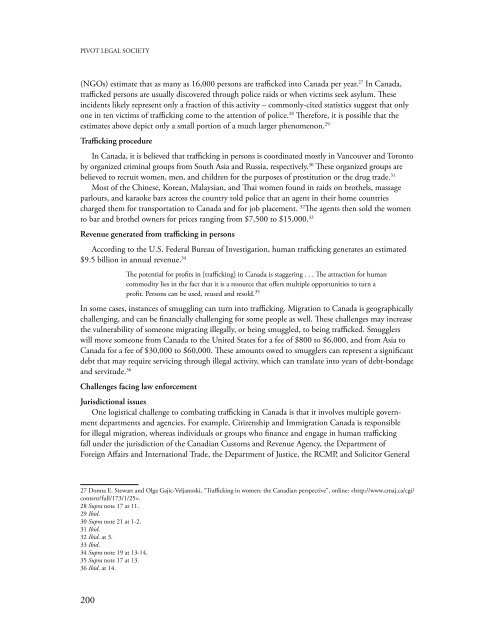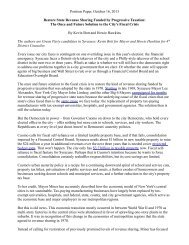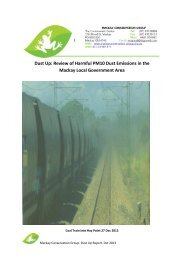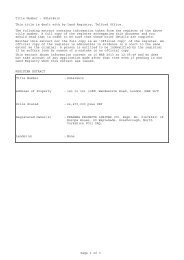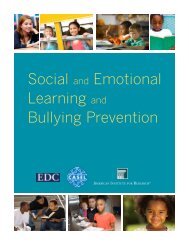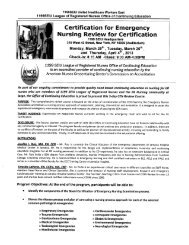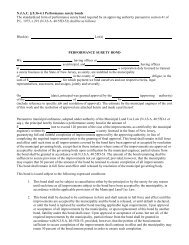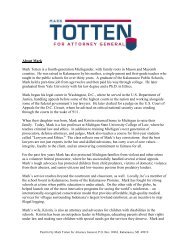Beyond Decriminalization: Sex-work, Human Rights and a New ...
Beyond Decriminalization: Sex-work, Human Rights and a New ...
Beyond Decriminalization: Sex-work, Human Rights and a New ...
- No tags were found...
You also want an ePaper? Increase the reach of your titles
YUMPU automatically turns print PDFs into web optimized ePapers that Google loves.
PIVOT LEGAL SOCIETY(NGOs) estimate that as many as 16,000 persons are trafficked into Canada per year. 27 In Canada,trafficked persons are usually discovered through police raids or when victims seek asylum. Theseincidents likely represent only a fraction of this activity – commonly-cited statistics suggest that onlyone in ten victims of trafficking come to the attention of police. 28 Therefore, it is possible that theestimates above depict only a small portion of a much larger phenomenon. 29Trafficking procedureIn Canada, it is believed that trafficking in persons is coordinated mostly in Vancouver <strong>and</strong> Torontoby organized criminal groups from South Asia <strong>and</strong> Russia, respectively. 30 These organized groups arebelieved to recruit women, men, <strong>and</strong> children for the purposes of prostitution or the drug trade. 31Most of the Chinese, Korean, Malaysian, <strong>and</strong> Thai women found in raids on brothels, massageparlours, <strong>and</strong> karaoke bars across the country told police that an agent in their home countriescharged them for transportation to Canada <strong>and</strong> for job placement. 32 The agents then sold the womento bar <strong>and</strong> brothel owners for prices ranging from $7,500 to $15,000. 33Revenue generated from trafficking in personsAccording to the U.S. Federal Bureau of Investigation, human trafficking generates an estimated$9.5 billion in annual revenue. 34The potential for profits in [trafficking] in Canada is staggering . . . The attraction for humancommodity lies in the fact that it is a resource that offers multiple opportunities to turn aprofit. Persons can be used, reused <strong>and</strong> resold. 35In some cases, instances of smuggling can turn into trafficking. Migration to Canada is geographicallychallenging, <strong>and</strong> can be financially challenging for some people as well. These challenges may increasethe vulnerability of someone migrating illegally, or being smuggled, to being trafficked. Smugglerswill move someone from Canada to the United States for a fee of $800 to $6,000, <strong>and</strong> from Asia toCanada for a fee of $30,000 to $60,000. These amounts owed to smugglers can represent a significantdebt that may require servicing through illegal activity, which can translate into years of debt-bondage<strong>and</strong> servitude. 36Challenges facing law enforcementJurisdictional issuesOne logistical challenge to combating trafficking in Canada is that it involves multiple governmentdepartments <strong>and</strong> agencies. For example, Citizenship <strong>and</strong> Immigration Canada is responsiblefor illegal migration, whereas individuals or groups who finance <strong>and</strong> engage in human traffickingfall under the jurisdiction of the Canadian Customs <strong>and</strong> Revenue Agency, the Department ofForeign Affairs <strong>and</strong> International Trade, the Department of Justice, the RCMP, <strong>and</strong> Solicitor General27 Donna E. Stewart <strong>and</strong> Olga Gajic-Veljanoski, “Trafficking in women: the Canadian perspective”, online: .28 Supra note 17 at 11.29 Ibid.30 Supra note 21 at 1-2.31 Ibid.32 Ibid. at 3.33 Ibid.34 Supra note 19 at 13-14.35 Supra note 17 at 13.36 Ibid. at 14.200


